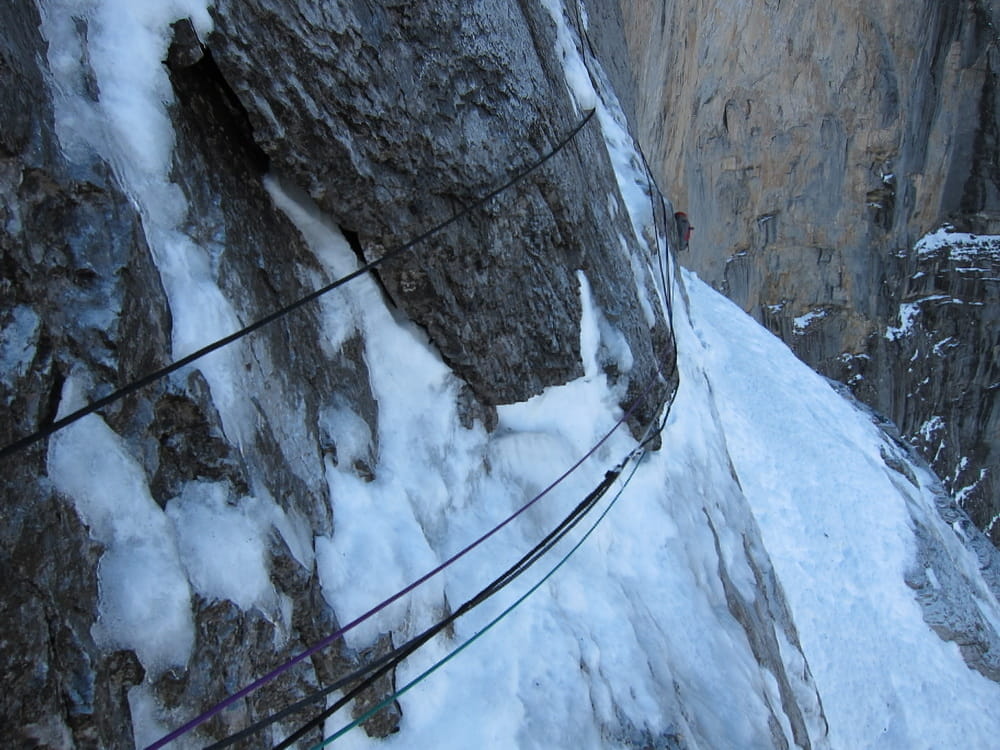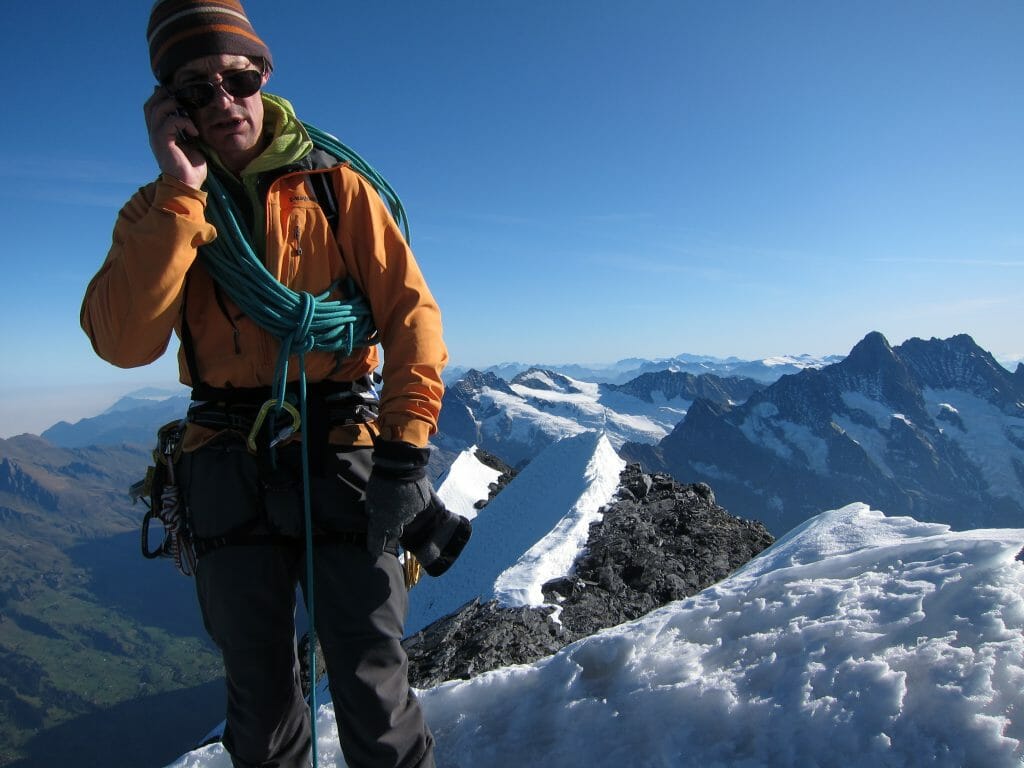Training for alpinism is arguably one of the most complex mental and physical skill sets that people train for simply because you have to be good at everything. For many climbers the 1938 route on the Eiger would rightfully be a career highlight. It is a brilliant climb, truly world-class in every way. In this article I will use training for and climbing the Eiger via its North Face as a parable for training for all alpinism.
Physical training
Routes to Do in Advance of the Eiger North Face

Know the Descent and the Weather, and Pick the Right Season
Descent
Weather
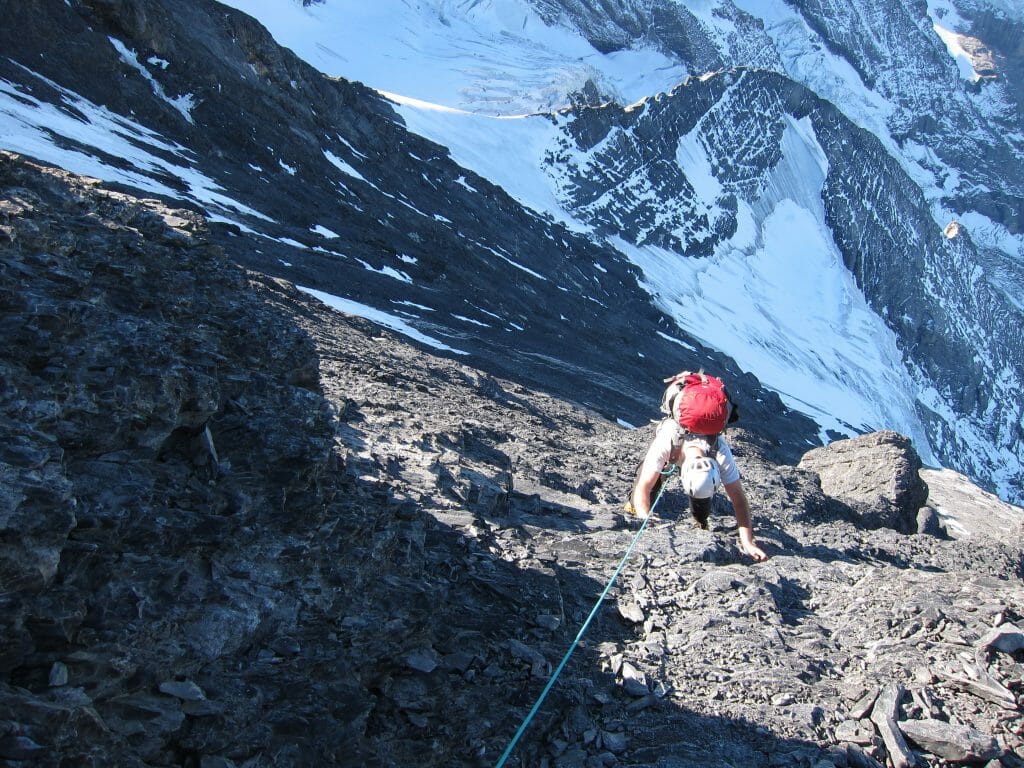
Season


Become Familiar with the Route
The Difficult Crack



Scratched up rock on the difficult crack.
Remember that the 1938 route was in fact climbed in 1938. Not in 2018. The route does not go up a 50-meter hand-to-fist crack that looks like it’s out of Indian Creek, even though there are bolts next to the crack. The route does not go up a vertical finger crack to a roof. Keep in mind what climbing tools looked like in 1938! This was one of the first routes ever accomplished with crampons that had front points, and only two of the four climbers had them. Ice axes did not have drooped picks, nor teeth in the picks.


The Traverse of the Gods

How the Big Features Fit Together




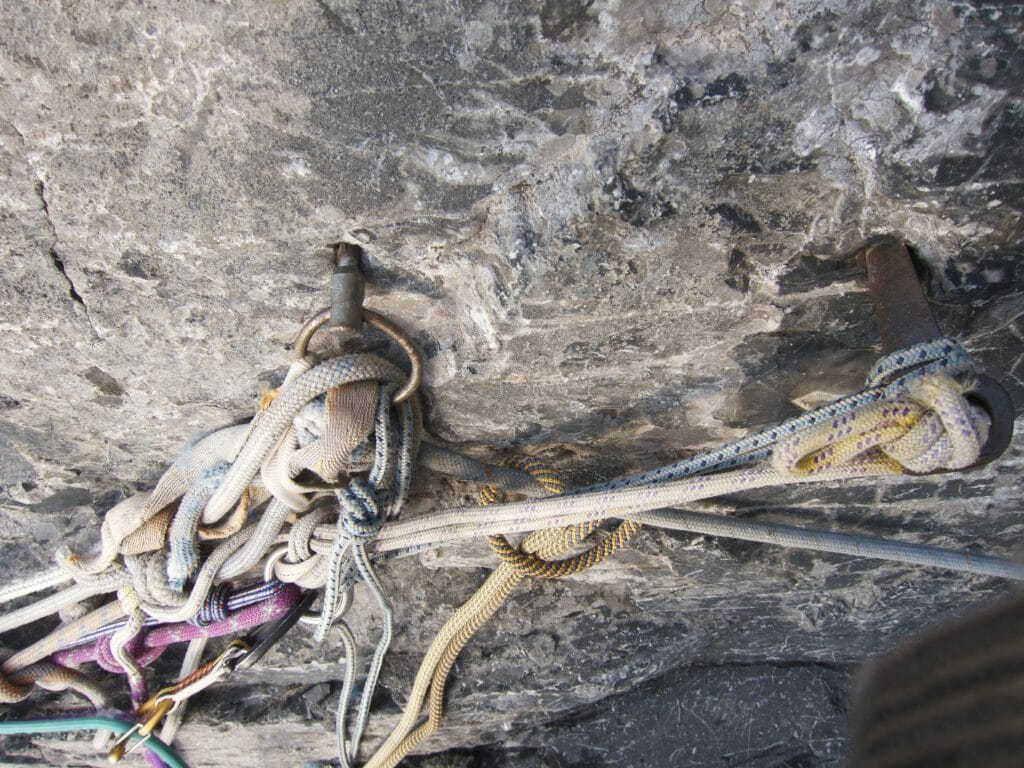
10 Keys to Success on the North Face of the Eiger
-
It must be below freezing all the way to the bottom of the face.
If it isn’t, the route will be unacceptably dangerous. I personally would not make exceptions on this point.
-
Today, in my opinion, the route needs to be in winter condition to be enjoyable and safe.
This means frozen—when I did it we did not experience any rockfall—and holding enough snow that has transformed into névé. If that has happened, there may be frozen steps that will allow for relatively quick passage across the icefields. -
Know exactly how to find the Difficult Crack and what it looks like.
I’ve included pictures, but I’m not going to spell it all out for you. -
Know the descent from the base of the Ice Hose.
There are rappel stations from near that point that descend steep terrain to the start of the Hinterstoisser. The reason is that the Ice Hose turns back a lot of climbers. It’s steep, sometimes delicate ice climbing without a lot of protection. If you back off this lead you need to know how to get down. If you know where to look, you can see if the Ice Hose is there or not with a good pair of binoculars. When scoping routes in the mountains, remember that ice is either blue or gray. Snow is white.

-
Know where the Death Bivouac is.
In my opinion, the Death Bivouac is the only good bivouac on the face besides the sites on the summit ridge near where the route tops out. I wouldn’t consider bivouacking anywhere else, unless I was forced to. The place is small and can fill up.

-
Be prepared for the Traverse of the Gods.
An amazing piece of climbing. But you’d better not fall. -
Know the Crystal Crack.
This is technically the crux of the route, but with the protection available it’s a yawn compared to the psychological cruxes you’ve already done to get here.
-
Don’t underestimate how far you still have to go from the base of the Exit Cracks.
This is good, sustained climbing. You’ll need to tap into some fitness to get to the summit ridge from here; it’s not close.
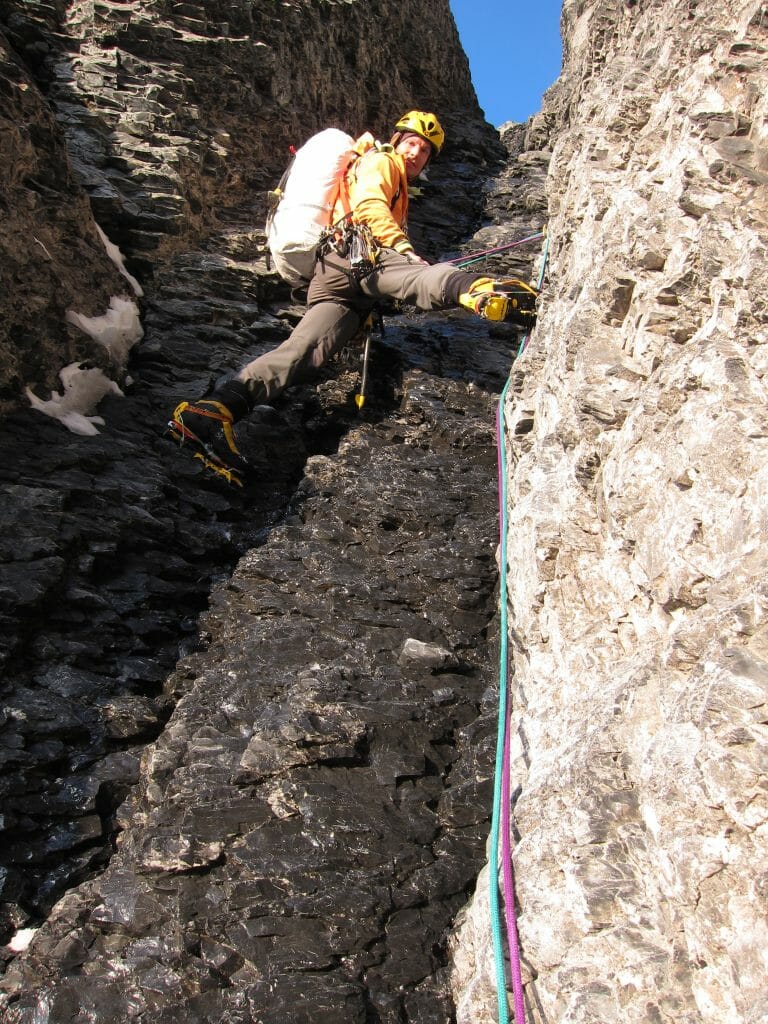
-
Be aerobically ready for the Exit Icefield.
This is the reason you train aerobic capacity and legs. Hundreds of vertical meters of steep(ish) 50-to-60-degree ice that you need to dispatch quickly. Further than you want it to be.
-
Again, know the descent.
Except in perfect weather, the Eiger is not easy to descend. So know and understand the terrain and make sure you did your homework—ideally with your own GPS creating your own track in perfect weather while climbing and descending. If anyone creates a high quality GPX file of the west flank descent, email it to me (steve [at]uphillathlete [dot]com) and I’ll post it up here. Otherwise, here is a page with excellent information and photos of climbing the west flank.
Be sure to check out our training plan specific to routes such as the Eiger.



